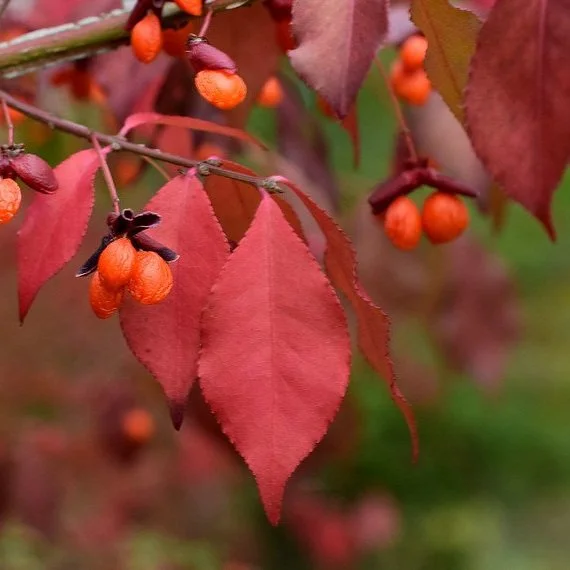Behold a Better Burning Bush
All right, I’m a few days late with this post, but!
There are native shrubs that bring more than the appearance of fire to your fall landscape. We can all appreciate the ethereal reds of the common burning bush shrub, but it’s the Western sand cherry (Prunus beseyyi) that blooms early for the first foraging bees and butterflies, is an important host plant for tiger swallowtail butterflies AND puts on an autumn show to rival the burning bush. Amen to that.
Plant This
Western Sand Cherry
Flowers in spring, berries in summer
Very water efficient
Host plant of tiger swallowtails
Photo: Bretty Whaley / flickr (CC BY-NC 2.0)
Not That
Burning Bush
Heavenly beauty in fall
Inconspicuous the rest of the year
Toxic to dogs
Photo: John Munt / flickr (CC BY-NC 2.0)
Pawnee Buttes sand cherry is a low growing version and one of my favorite little shrubs. It is cheerful year-round, asks for little, and gives a whole bunch. It has a compact, low-growing form and, like pretty many prairie plants, is very water efficient. It’s early-spring blooming flowers have more visual pop than the burning bush’s inconspicuous blooms. Birds will mark where yours is planted and return to it year after year to collect fruits. In fall, it puts on a color show before it drops its leaves to reveal a gnarled branching habit.
And then there’s its role as a host plant for tiger swallowtail butterflies, which, I mean, take a look.
Tiger swallowtail. Image: Vicki DeLoach / flickr (CC BY-NC-ND 2.0)
I’ll admit the burning bush outshines the sand cherry in fall, but the tiger swallowtails alone more than make up for the difference — and spread your garden’s beauty out across the calendar. It would be just fine to see the butterflies and bees visit this plant. Pick a sunny spot for it, water it for the first year, and watch it buzz with life as it grows to 12-18” inches tall and spreads to 4-6’ wide.



